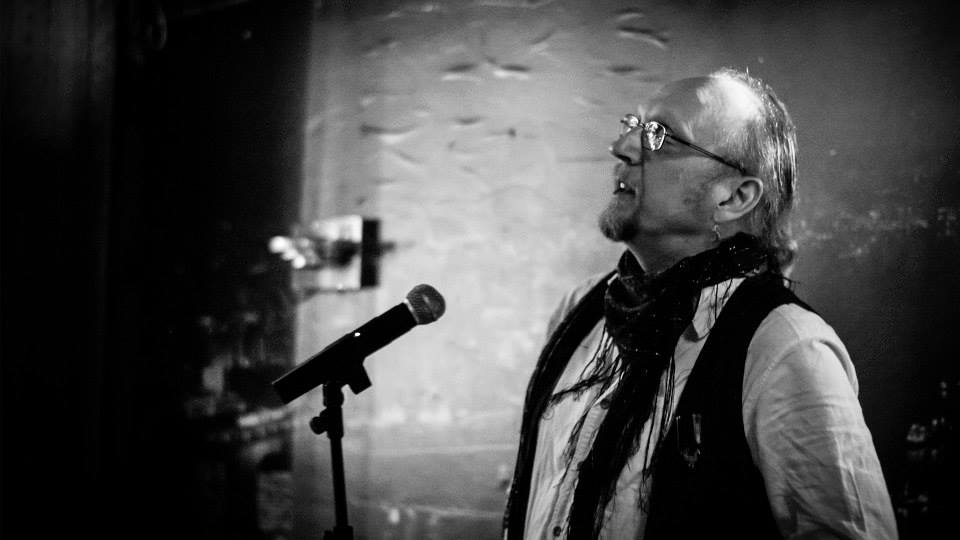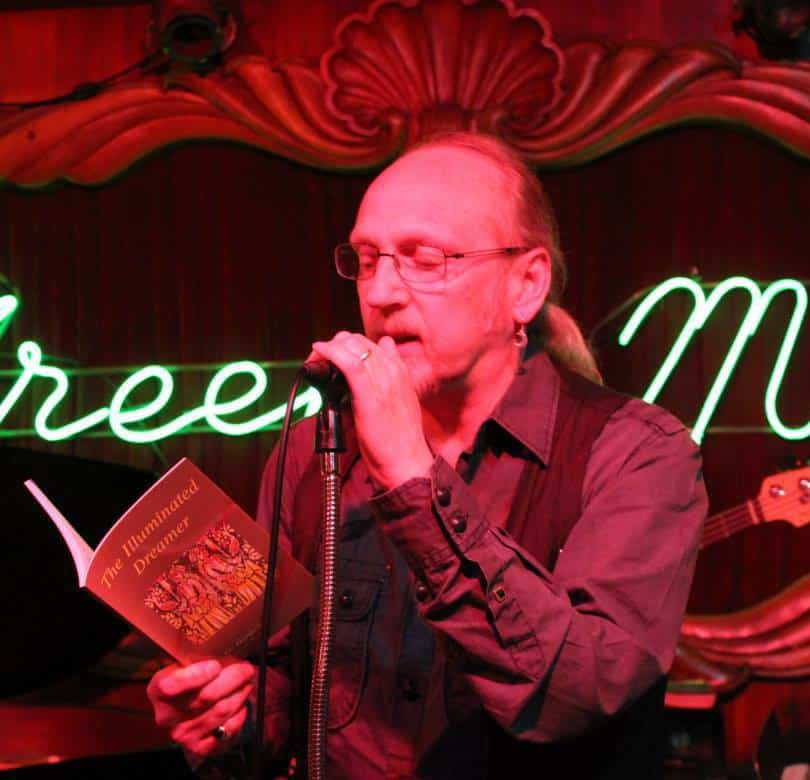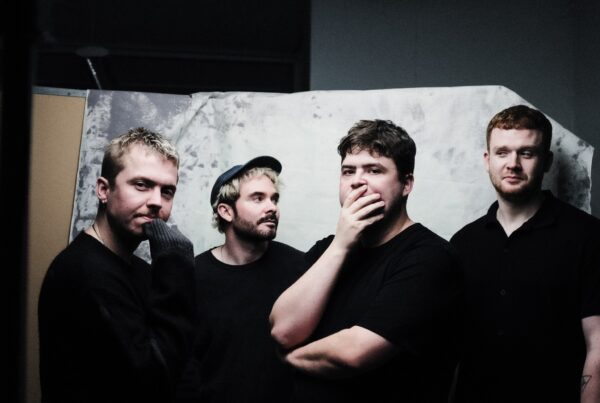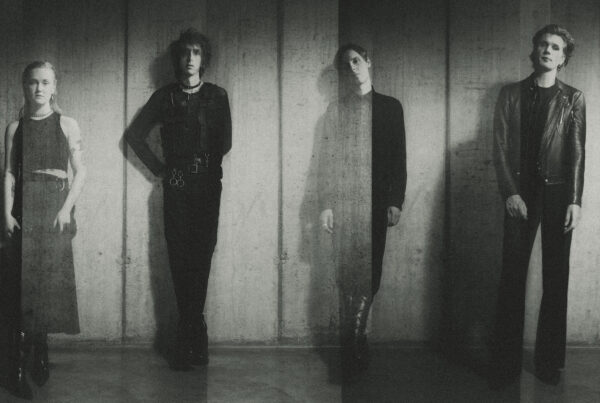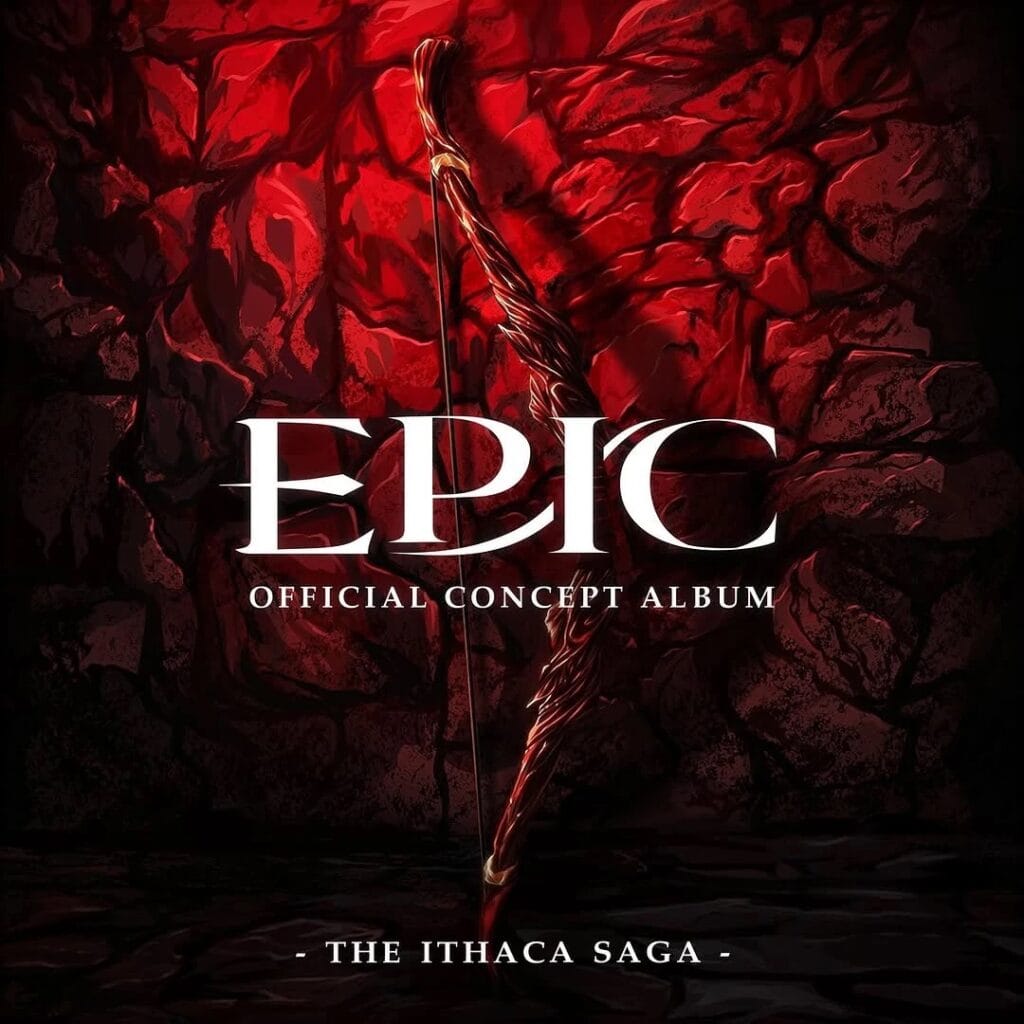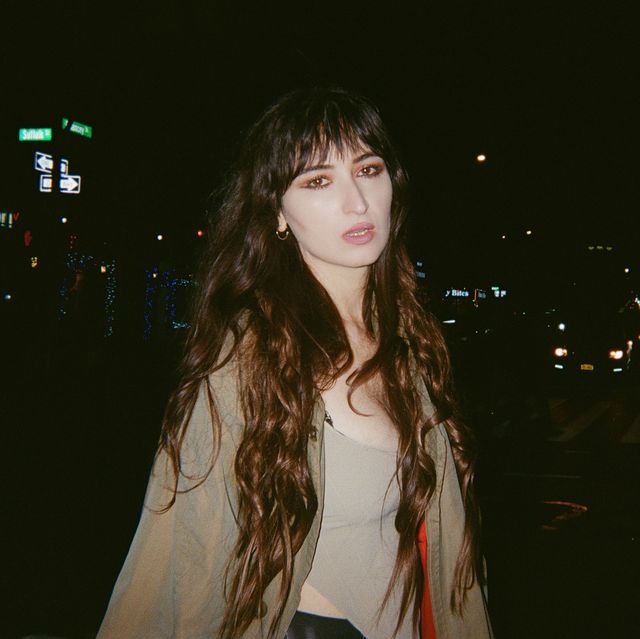Books, poetry, space-rock, Hawkwind, photography, art, Glastonbury, and wombles. It’s all here as we chat to one of the most respected men of many talents based in Yorkshire – the inimitable Oz Hardwick (yes inimitable, I tried to imitate him once and failed, proving once and for all that it’s just not doable – like seeing a child playing with Lego and refraining from joining in).
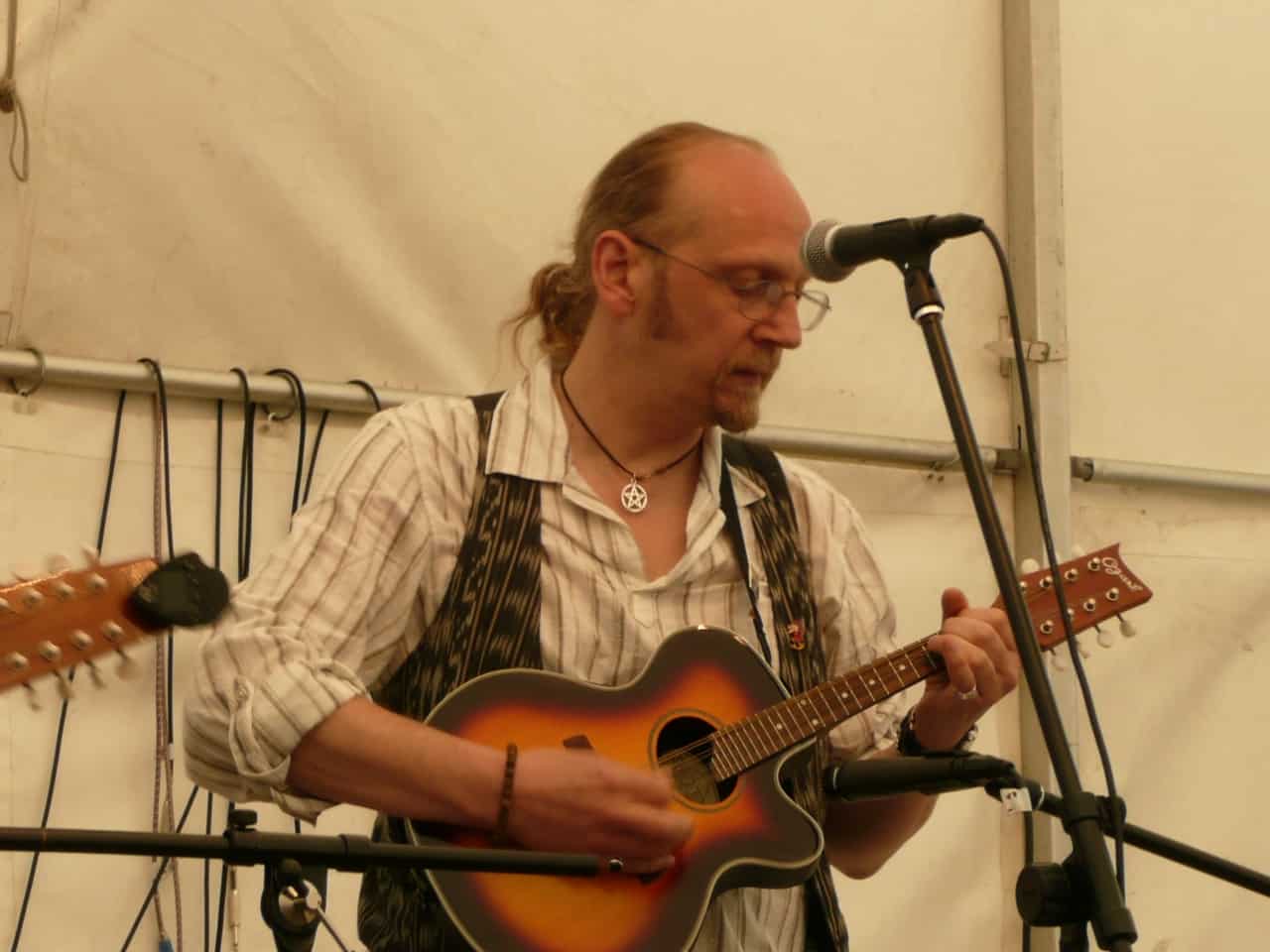
You may call Oz Hardwick many things –- writer, musician, photographer, artist, lecturer, cat lover, Professor, but to define a man of such multitudes by any of these would be criminally reductive. We sat down with the generous-spirited man of letters, images, sound, and cats to find out more about what makes him tick, and to pick his ever-active brain about his latest book, ‘An Eschatological Bestiary’ available now from Dog Horn Publishing. But before all that, we made sure Oz was comfy and settled, with pint in hand, and asked him what he was up to at the moment.
[like_to_read][/like_to_read]“What am I doing now?” he begins with a familiar sparkle is in eyes. “Well, apart from getting to know my new cat (Louis – he’s exceptionally ginger), I’ve a number of projects just reaching completion. There’s a new poetry collection – ‘The Ringmaster’s Apprentice’ – coming out with Valley Press in October, and there’s a poetry and music CD with Amina Alyal and Michael Graham that should be out before then. The other side of this is that I’ve all manner of diverse bits and pieces swirling about, both in poetry and music, that are beginning to take shape and direction.”
It’s obvious Oz is a man who can’t rest on his laurels. In fact, one wonders if he even has laurels to rest upon (and one also wonders just how comfy laurels actually are). The latest release, ‘An Eschatological Bestiary’ is a strange beast (pardon the pun), so we asked if the illuminated dreamer himself could illuminate us regarding the book.
“Well, in some ways it’s a departure, but in others it’s just bringing together a number of interests. It comes out of my interest in medieval animal iconography, one aspect of which is bestiaries. These were illustrated books of animals, which were part natural history, part superstition, and part biblical allegory. They were about making sense of the natural world. It seems to me that, although we now know more about nature, and don’t think of things in those terms, we are more distanced from it. So, I wanted to do something that was essentially about disconnection –- including the disjunction between language and meaningful connection and engagement.”
It may be a departure on the surface, but anyone familiar with Oz’s work will know that he has always enjoyed a playful approach to the written word. Oz then kindly offered us an insight into the technical approach to the book: “I thought the DaDa/Surrealist cut-up technique would offer an interesting approach to echo the juxtapositions of types of knowledge you find in the medieval model. So I gathered things like my own academic work, natural history, medical texts, and unreliable internet sources, cut them up, put them through randomisation software, regularised the grammar in the resulting text and edited each poem down to 200 words. There’s an interesting dynamic between chance and intention, resulting in a bestiary that, rather than drawing together disparate elements to make a comforting whole, draws attention to fragmentation and chaos, embodying many of my concerns – particularly relating to the destruction of the natural world, of course, but also individual fragmentation and the instability of identity.”
There will also be a review of the book completed very soon and I know this because I be the one writing it, so don’t question the validity of my statement alright? Unlike the more narrow-focused of us who need to call in favours from talented people we know to add illustrations to our work, Oz can call upon his own artistic expertise to add a touch of visual panache to his work. ‘An Eschatological Bestiary’ boasts some striking images that complement each entry in the bestiary, all completed by the poet himself.
“The illustrations owe a debt to Max Ernst, and are collages of images taken from 19th-early 20th-century sources. It’s the legacy of my Art College days, and the intention is that the pictures complement, illuminate and confuse the text, all at the same time. There’s a lot of play and interpretative space so that, I hope, one person can derive many different readings over time. It all sounds terribly intellectual when I put it like this, but I hope it’s fun, too!”
It certainly is fun and, from a personal standpoint, the absolute joy in revelling in the opportunities offered by the written word has always been something that has made Oz’s work a must. There’s a sense of reveling in the joy of the written word throughout the book. The medieval is also a theme that seems to spark Oz Hardwick’s creativity, so I queried what it is about the period that makes it so appealing.
“Ooh – that’s a toughie!” he laughs, “I like the sound and rhythm of the language, and I love the visual art; it’s not ‘realistic’ but instead carries a message. And then there’s the intricacy of ornament, without going over the top into the baroque. And, of course, York’s a brilliant place in which to indulge in these enthusiasms.”
It certainly came as a surprise to me to find that in addition to being such an inventive and memorable wordsmith, Oz is also an incredibly assured artist. “I like ‘assured artist’,” he says. “I actually trained as a photographer, and I’ve kept that up in my spare time. This year I’ve had a lot of work in box sets by Hawkwind and Ozric Tentacles, which is rather pleasing. But alongside this, I have an interest in graphics and have always been drawn to collage – right from Max Ernst, through to Peter Blake’s recent work in his illustrations for Under Milk Wood. So it was fun, as well as connecting to the Bestiary tradition, to add this aspect to the book. Actually, I’ve been very fortunate with my books, for the most part, and have had a lot of input into cover design since the second one.”
Of course being predominantly a music magazine, I couldn’t resist jumping on the mention of Hawkwind, and pushed to find out more about how Oz found his work being included in releases from such hugely respected bands. “Seeing Hawkwind on Top of the Pops when I was 12 was genuinely a life-changing experience for all manner of reasons – not least of which was shortly afterwards discovering the way they combined spoken word with music and electronic sound on the Space Ritual. I became a big fan and followed them round for years and took a load of photos, up until the end of the 80s. When records from that era started being reissued on CD, a few of my photos crept onto covers, posters and into the first major biography, and so on, but the recent box set from the early 80s is the first front cover, and there are a lot of my other photos throughout the booklet. I’m still enough of a fan to be well pleased by that! I’ve also had the pleasure of reading with various former members of the band on occasions in recent years – both my own work and, on one occasion, a few of Robert Calvert’s originals that got me into the band in the first place. As you can imagine, that’s rather satisfying.”
Music, then, clearly has played a big part in the creative life of the man who has been referred to by Connecticut Review as ‘My favourite living poet’. But just how much of an influence is music on Oz Hardwick?
“There’s probably two major – rather incongruous – influences. First, as I mentioned, is Hawkwind, which led me into all manner of space rock, like Gong, Steve Hillage, Amon Duul II and, later, The Magic Mushroom Band and Ozric Tentacles. On the other hand, there’s English folk music. My grandfather, who lived with us when I was a kid, played melodeon and mouth organ, and would play the tunes he grew up with, and there was still the legacy of Cecil Sharp in the schools, with a lot of folk music. So, one day I’ll get around to forming a space-folk band!”
I think we can all agree that we NEED to hear space-folk as soon as possible, so stay tuned to us for more news on that (shameless plugging). It makes sense of course that such creative, if surreal musical tendencies would form part of Oz’s make up. As previously mentioned, the surreal is something which has always woven its way through his work.
“There are some early 70s German bands who mix acoustic instruments and electronics,” he continues. “I’ve always liked the acoustic guitar driven tracks in Hawkwind, so it’s not that big a step. As for surrealism, it’s never been quite so prominent as in the Bestiary, but there have always been influences – the imagery of Paul Delvaux, whose work I was introduced to by my art teacher at school, has had a pervasive influence, and he’s one of the ghosts that haunts all my books somewhere.”
As a brazen leech, and one who believes in following the example of the greats, I tried my luck at finding out a little more about Oz’s creative process, and how he gets the act of writing done. Fortunately, with characteristic grace and generosity, Oz humours me with some musings on the writing process:
“Regarding cut-ups, I’ve always liked surprising juxtapositions, whether in image, word, sound, whatever, so it’s something that I do a lot anyway, although the Bestiary is the first sustained experiment with it. In terms of the writing process, it will generally start with a phrase – maybe in response to something I’ve seen or heard, but often just arising because I’m pretty much constantly playing with words in my head – and then it will grow from there. That process of growing is very much the tried-and-tested method of sitting down with my ever-present notebook (I’m still very much a pen and paper sort of person), going through the phrases I’ve gathered, seeing what grabs me, and then worrying away at it, seeing where it wants to take me and where I want to go, and coming to decisions that make us both happy. Most of this involves a very un-Romantic process of applied concentration and craftsmanship – something that comes as quite disappointing news to a number of my students when they’re starting out, but which I find immensely satisfying. I know it’s bad for the dissolute Bohemian image, but I’m an immensely focused and hard-working person, who takes great pleasure in something done well.”
With poetry, one often finds individuals who object to overly-formal poetry, or poetry without form. For myself Nicanor Parra’s maxim is never far from my mind: “In poetry everything is permitted. With this one exception of course: You must improve on the blank page”. It was heartening then to find that Oz shared a similar mind set regarding the freedom of play with language:
“I am interested in form, although I’m not necessarily a slavish adherent. Sometimes 13 lines is better for the poem than putting in an extra one just to make a sonnet. In broader terms, I do find myself naturally falling into four-stress lines with a lot of alliteration holding things together –probably an indication of how remarkably English I am, Old Boy!”
Reading Oz’s work, one finds a diverse range of styles and subjects, nevertheless deployed with a distinctive and unmistakeable voice. The challenge of ‘finding one’s voice’ is something that writers often talk of striving toward, but rarely finding. I was keen to know then, what influences Oz himself finds in his own work.
“Although I can’t detect it in my work, I’d have to say Robert Burns was there at the start, purely because my grandfather, who I mentioned earlier, loved him and would quote him at length, so that was always going in. Of ‘the greats’ I love medieval poetry, particularly the Gawain-poet and Chaucer, and I’ve had a love/hate relationship with Langland for about 25 years. Then there’s the rhythmic fireworks of Hopkins (the Keith Moon of Victorian poetry, though possibly without the drugs, groupies and pyrotechnics), the deceptive ease of form in Browning, the lasting echoes of Pound’s Imagist period… As for current poets, both Katrina Porteous and Alice Oswald have remarkable music in their work. Paul Farley and Simon Armitage make ordinary diction extraordinary, Christopher Reid shows that you can address the deeply personal without for a moment being self-indulgent (a lesson many could learn from), and Jo Shapcott always surprises. And then there’s my book-of-the-moment recommendation: Bill Trub’s debut collection, All Men are Afraid, is never very far from me at the moment – very distinctive and fresh.”
One of the true joys of having the opportunity to interview those you respect and admire is that you can shamelessly pick their brains for your own gain. Here however, I thought I’d be generous to you lovely readers and asked for all our benefits, what advice would Oz give to people beginning to write poetry?
“Nothing very original, I’m afraid,” he says honestly. “Read widely and voraciously; share your work with people whose opinions you value and can trust; remember that, when you’re writing, the poem’s more important than you are.”
Our time was beginning to draw to a close, as the pints were looking sad and empty, so I had to know what was next for man of seemingly boundless energy and inspiration.
“Well (deep breath): there’s a new poetry collection, ‘The Ringmaster’s Apprentice’, out at the end of October; I have just recorded a CD, on an Eastern Breeze, with Sankakei, which is a sequence of tanka by Amina Alyal and me, with settings on wonderful Japanese instruments by Michael Graham – that’s out soon; there’s a track by Sixpenny Wayke on the next in Cold Spring’s series of ‘Dark Britannica’ CDs; a couple of upcoming gigs with Root 64, and all manner of other things, including an edited collection of medievalist poets, a song cycle, a joint collection of work with Amina, and there are a few things growing out of ‘An Eschatological Bestiary’.”
It’s a dizzying array of projects, and before I bade Oz farewell, I asked if he could tell us more about the musical projects and bands he is currently involved with. One of the most striking is the Tanka and Taiko project that you may have caught at the York Literature Festival in past years.
“About three years ago,” Oz explains, “I was approached by a guy called Aaron Turner –- with whom I used to be in a band in the mid-90s – who was part of Kaminari UK, a Yorkshire based taiko drumming group. He had the idea of combining their take on this musical form with poetry based on Japanese literary forms, so he asked me if I could come up with something. I thought it would be more interesting to have two different voices, so I got Amina Alyal on board, and we came up with a show in collaboration. We’ve played a number of different venues – Wakefield Cathedral was probably the most impressive (& loudest!) – and it’s constantly evolved, involving other musicians, dancers, projections and so on, depending on who’s available. It’s a logistical nightmare, because there are so many people and it needs so much rehearsal, but it’s very powerful indeed and has gone down really well with audiences. There’s no-one else doing anything like it.”
And of his bands Oz says: “Root 64 are Miles Salter (poet, singer, songwriter, guitarist, novelist, journalist, blah blah), Nick Thompson (top fiddle player) and me on rudimentary bass guitar. Mostly, it’s Americana played for drunk people – we go down a storm at beer festivals – but there are a couple of originals in there, too. Sixpenny Wayke is me on bass, mandolin & dulcimer, with fellow West Country exile Paul Coleman on vocals, guitar and octave mandolin. We do a couple of traditional songs, but mainly original material in the English folk idiom. We’ve had tracks on a couple of compilations and played Glastonbury a couple of times on the smallest – yet unquestionably coolest – stages.”
They say that interviewing those you respect can often be a disappointment. Like that time I thought I saw a womble disguised as a hedgehog, but then it turned that it was just a normal hedgehog (worst day ever). Fortunately Oz is 100% womble and you can find out more about his bewildering array of projects at his website here: www.ozhardwick.co.uk
And you can pick up a copy of ‘An Eschatological Bestiary’ over here (and as a spoiler for the review – don’t worry I give it two thumbs up and a peanut, so you’re safe – but you still have to read the review right?): http://www.doghornpublishing.com/wordpress/books/an-eschatological-bestiary-by-oz-hardwick

